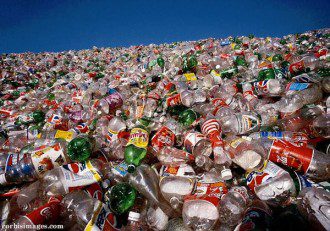| Online: | |
| Visits: | |
| Stories: |

| Story Views | |
| Now: | |
| Last Hour: | |
| Last 24 Hours: | |
| Total: | |
Plastic-Eating Mushroom Discovered in the Amazon Rainforest — A Solution for Our Trash Saturated World?
Contributing Writer for Wake Up World
In a world addicted to plastic, it’s hard to imagine life without it. The problem is, plastic doesn’t breakdown safely and has proven itself to be exceedingly toxic for the planet and its inhabitants. We’re drowning in the stuff and it doesn’t look like our reliance on the material will end anytime in the near future. Radical solutions are needed — and soon. Recently, a team of students discovered what very well may be part of the answer: a plastic-eating fungus.
Choking to Death on a Modern ‘Wonder’ Material
Plastic is a relatively new material, developed in the last seventy years or so. As I wrote previously in “Plastic is Killing the Planet and Our Health — Here’s How We Can Turn the Tide,” the widespread use of the material is directly linked to the military needs of the United States:
“During World War II, raw materials were in short supply and we needed a resilient, economical and easily manufactured substitute. Plastic to the rescue! Made from readily available petroleum, plastic was the go-to material for the war machine. It was also a boon for oil companies as they had an entirely new market to tap — from 20 million pounds in 1927 to 650 million pounds by 1943. That’s a 3,000% increase in just a few short years.”
Jump to the present day. A recent article from The Huffington Post gives us a glimpse into how much plastic American consumers throw away each year, citing sobering data from the Environmental Protection Agency (EPA):
- Plastic Plates and Cups: 780,000 tons were produced, and all 780,000 tons were discarded.
- Plastic Bags, Sacks and Wraps: 3,960,000 tons were produced. 9.8% was recovered (390,000). 3,570,000 tons were discarded.
- Plastic Trash Bags: 930,000 tons were produced, and all 930,000 were discarded.
- “Other” non-durable goods including plastic disposable diapers, footwear and clothing: amounted to 4,810,000 tons produced with all 4,810,000 tons discarded.
- PET Bottles and Jars: 2,680,000 tons were produced, 27.2 % were recovered (730,000 tons) and 1,950,000 tons were discarded.
- HDPE (white translucent homopolymer bottles): 750,000 tons were produced, and 29.3 % (220,000 tons) were recovered. 530,000 tons were discarded.
- “Other Plastic Packaging” including coatings, closures, lids, caps, clamshells, egg cartons, produce baskets, trays, shapes, and loose fill: 3,720,000 tons were produced. 3% (110,000 tons) were recovered, and 3 Million 610 Thousand Tons were discarded.
Plastic isn’t really something we can sweep under the carpet and have it magically disappear without it causing problems, although we’ve certainly tried our best to do so — by dumping it into the ocean (so another country will have to deal with it), burying it in landfills (which eventually leach a toxic mess into the soil and ground water) or burning it (airborne DDT and PCBs anyone?).
Previous articles by Carolanne Wright:
- Dr Sebi: The Man Who Cures Aids, Cancer, Diabetes and More
- Chronic Lyme Disease: A Modern Plague the Government Chooses to Ignore
- Big Pharma and Organized Crime — They are More Similar Than You May Think
- Over 100 Scientific Studies Agree: Cannabis Annihilates Cancer
- Emotional Energetic Healing: The Future of Medicine is Here
- Why Every Parent Should Consider Unschooling
- The Greenhouse of the Future: Grow Your Own Food Year-Round With This Revolutionary System
- First U.S. City Produces More Electricity Than It Uses — With 100% Renewable Technology
- Autistic Boy with Higher IQ Than Einstein Discovers Gift After Removal from State-Run Therapy
- Enhance Spiritual, Mental and Physical Well-being with a Pineal Gland Detox
-
Follow Wake Up World On…
[FACEBOOK]: http://www.facebook.com/joinwakeupworld (An interactive community of over 2,800,000)
[PINTEREST]: http://pinterest.com/wakeupword/
[TWITTER]: http://twitter.com/joinwakeupworld
[YOUTUBE]: http://www.youtube.com/joinwakeupworld
[GOOGLE PLUS]: https://plus.google.com/112452105795129310867/posts
[WEBSITE]: http://wakeup-world.com




